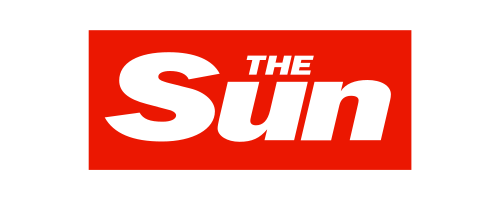Skip to the good bit
ToggleIn the highly regulated and competitive field of industrial chemicals, packaging and labeling innovations have become essential for meeting safety, sustainability, and customer engagement goals. With advancements in materials, digital technology, and regulatory compliance, industrial chemical companies are finding new ways to protect their products, communicate critical information, and enhance their brand image. Here, we explore some of the latest trends and innovations in packaging and labeling for industrial chemicals and how these developments are reshaping the industry.
1. Enhanced Safety through Smart Packaging
Safety is paramount in the packaging of industrial chemicals, as these products are often hazardous. Traditional packaging methods have been improved with innovative materials and technologies designed to minimize the risks associated with handling and transporting chemicals. One of the emerging trends is smart packaging, which integrates sensors and indicators that can detect changes in temperature, pressure, and leakage.
For instance, some containers now feature pressure-sensitive films that expand or contract based on temperature, alerting handlers if storage conditions are outside the recommended range. Smart caps, which are designed to indicate tampering or contamination, help ensure the integrity of industrial chemicals from manufacturer to end-user. This technology not only enhances safety but also reduces product waste due to improper handling or storage.
2. Sustainable Packaging Materials
Sustainability has become a significant focus in recent years, and the industrial chemicals sector is no exception. Companies are increasingly adopting environmentally friendly materials to reduce their carbon footprint and meet regulatory requirements for sustainable practices. Recyclable plastics, biodegradable materials, and reusable containers are now more common in chemical packaging.
One example is the use of polyethylene terephthalate (PET) for bottles, a lightweight and highly recyclable material. This switch not only reduces waste but also lowers shipping costs due to its reduced weight. Additionally, some companies are experimenting with biodegradable linings for drums and barrels, allowing for safer disposal and reduced environmental impact.
3. Eco-Friendly Labeling Solutions
Labeling for industrial chemicals requires careful consideration due to the vast amount of regulatory information that must be displayed, such as hazard symbols, handling instructions, and composition details. Traditionally, labels have been made from synthetic materials that are not easily recyclable. However, recent innovations have led to the development of eco-friendly label options, such as water-based inks and biodegradable adhesive labels.
Water-based inks are low in volatile organic compounds (VOCs), reducing the environmental impact of the labeling process. Some companies have also turned to soy-based inks, which are derived from renewable resources and offer vibrant colors without compromising on environmental considerations. Moreover, biodegradable labels can now withstand exposure to chemicals, ensuring they remain legible and intact throughout the product’s lifecycle.
4. Digital Labeling with QR Codes
One of the most transformative trends in the industrial chemical sector is the incorporation of digital labeling, especially through QR codes. QR codes provide instant access to detailed product information, including safety data sheets (SDS), handling instructions, and regulatory compliance details, which can otherwise be difficult to fit on traditional labels. By scanning the QR code with a smartphone, users can access updated, extensive, and legally compliant information on demand.
This innovation is particularly useful for industrial chemicals, as safety regulations and handling instructions can frequently change. With digital labels, companies can ensure that customers and handlers have access to the latest information without the need to reprint labels every time a regulation is updated. Additionally, digital labeling can include instructions in multiple languages, making it easier for global customers to understand the information.
5. Tamper-Evident and Anti-Counterfeiting Packaging
Tamper-evident features are crucial in the industrial chemical sector, where the integrity of the product is often a matter of safety and compliance. Innovations in tamper-evident packaging include the use of seals, breakaway caps, and holographic labels that show clear evidence if tampering has occurred. For instance, shrink bands and pull-tab seals provide an extra layer of security that reassures end-users of the product’s authenticity.
Counterfeit industrial chemicals can have disastrous effects, including safety hazards and compliance risks. In response, some companies are incorporating anti-counterfeiting technologies into their packaging, such as unique holograms, watermarks, or RFID tags, which make it easy to verify the authenticity of the product. These measures ensure that customers receive the quality and safety they expect while also protecting the company’s reputation.
6. Ergonomic Design and User-Friendly Features
Industrial chemicals often come in bulk quantities or heavy containers that require special handling equipment. To make these products more user-friendly, companies are introducing ergonomic designs that facilitate safe and easy handling. Containers with built-in handles, lightweight materials, and easy-pour spouts can significantly reduce the risk of spills and accidents.
Moreover, some packaging now includes double-walled designs to enhance durability and protect against accidental punctures. Industrial chemical companies are also exploring ways to make closures easier to open and reseal, especially for products that require frequent use. For instance, some companies have adopted flip-top or push-button caps that can be operated with one hand, making it easier for handlers to access the product safely.
7. Customizable Packaging for Diverse Needs
The industrial chemicals industry serves a wide range of sectors, each with unique packaging requirements. Recognizing this diversity, many manufacturers now offer customizable packaging solutions that can be tailored to meet specific needs. Custom packaging not only addresses the unique handling, storage, and transportation requirements of different chemicals but also allows companies to brand their products more effectively.
For example, some companies offer modular packaging that allows clients to select the container size, material, and closure type that best fits their requirements. Additionally, these customized solutions can be branded with unique logos, colors, and messaging, helping companies reinforce their identity while meeting their customers’ practical needs.
8. Smart Packaging with IoT Integration
The Internet of Things (IoT) is making inroads into industrial chemical packaging through the integration of smart sensors that monitor product conditions in real-time. IoT-enabled packaging can track metrics like temperature, humidity, and pressure, ensuring that the chemicals remain in optimal condition throughout the supply chain. For instance, temperature-sensitive chemicals can be monitored continuously, alerting handlers if there’s a risk of product degradation.
IoT also allows for greater traceability, providing companies with a complete record of the product’s journey from production to delivery. In the event of a quality issue or recall, IoT-enabled packaging makes it easier to pinpoint the source and affected batches, minimizing disruptions and improving accountability.
9. Advanced Regulatory Compliance Labeling
Compliance with regulatory requirements is crucial for companies dealing with industrial chemicals, as these products often come with strict labeling standards. Advanced labeling solutions now make it easier to meet compliance standards in multiple regions, as these labels can dynamically display relevant information depending on the product’s location. Companies can now print labels with color-coded hazard symbols and display regulatory data from agencies like OSHA, REACH, and CLP.
Labeling software has also evolved, allowing companies to design and manage compliant labels across global markets. These systems provide a centralized platform where companies can update label content, design templates, and regulatory information, ensuring that each product meets the latest legal requirements. Some of these systems can even automatically update labels if regulatory information changes, ensuring continuous compliance without the need for manual label reprints.
10. Lightweight and Durable Packaging for Cost Efficiency
Weight reduction in packaging materials has become a significant trend, as lighter containers reduce both material costs and shipping expenses. Lightweight yet durable materials, such as high-density polyethylene (HDPE), have become popular choices for chemical containers due to their strength, chemical resistance, and ease of recycling. By using lighter materials, companies can lower their transportation costs, contributing to both environmental and financial benefits.
Another development is the shift toward collapsible and stackable containers. These packaging designs minimize the amount of space required for storage and transportation, reducing logistics costs. For example, some collapsible drums can be stacked more compactly after use, saving space in both shipping and storage and ultimately driving down costs across the supply chain.
Conclusion
Packaging and labeling innovations in the industrial chemicals sector are transforming how products are stored, transported, and used, offering new solutions for safety, sustainability, and efficiency. As technology continues to advance, we can expect to see further improvements in smart packaging, eco-friendly materials, and digital labeling solutions that enhance the user experience and ensure regulatory compliance.
For industrial chemical companies, staying at the forefront of these innovations not only strengthens safety and operational efficiency but also offers a competitive edge in a crowded market. With each new development, the industry moves closer to a future where packaging not only protects but also actively adds value to the product. As these innovations continue to evolve, businesses in the industrial chemicals sector will be better positioned to meet the complex needs of their clients while minimizing their environmental impact and ensuring compliance with a global landscape of regulatory standards.







